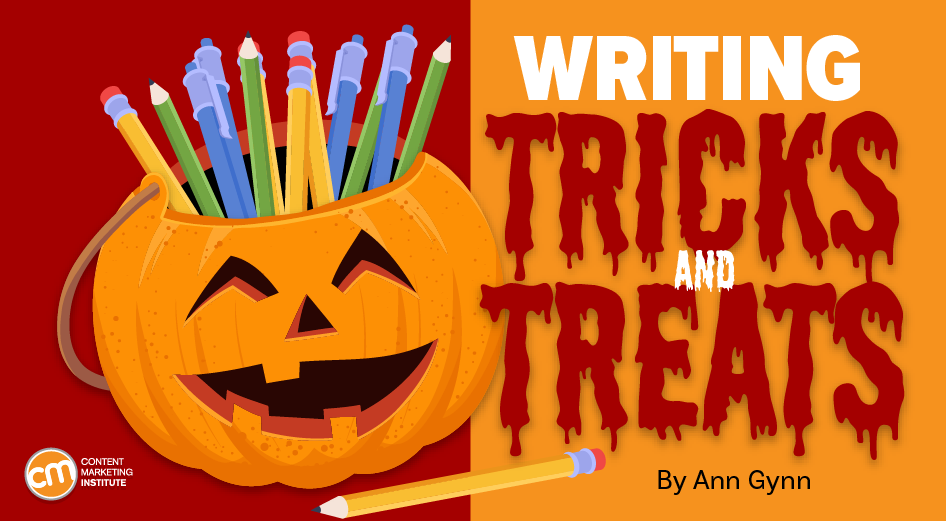Writers sometimes treat numbers like Frankenstein’s monster.
You add them into your content to make the subject more alive, but the end result doesn’t exactly turn out how you expected.
If the thought of numbers sends you running in the night, take this turn instead to become the writing wizard of numerals.
1. Turn numbers into people
ORIGINAL: Over 80% of dentists surveyed recommend sugarless gum.
REVISED: Four of five dentists recommend sugarless gum.
WHAT CHANGED: The revision converts the percentage to the number of dentists.
WHY: Translating percentages into numbers of people (or things) allows the reader to visualize better who or what is being counted or affected.
TIP: Every time you write a percentage, ask whether the story would be more powerful if readers envisioned the person or thing being measured. If so, you can simply say the “percent number” out of 100.
In the example above, it could have said 80 of 100 dentists. But that big number is still hard to visualize, so simple math can reduce the percentage to the smallest whole number. The phrase “four of five dentists” is much more relatable – readers may visualize where their dentist would be among the five.
2. Use percentages to show pervasiveness or lack of pervasiveness
ORIGINAL: About 4 million U.S. workers use public transportation to travel to their workplaces.
REVISED: About 2.5% of U.S. workers use public transportation to travel to their workplaces.
WHAT CHANGED: Instead of quantifying the number of people, a percentage was used.
WHY: If you want to show how common or uncommon something is, citing a percentage can be more effective. In this example, 4 million people sounds like a lot. A reader could be impressed by the number. But when 2.5% is used, the reader realizes that relatively few workers use public transportation.
TIP: If you want to show commonality (or lack thereof), use a percent figure. Now, if you want to demonstrate pervasiveness (or lack thereof) AND put it in real people/things terms, use both a percentage and a number. About 2.5% (4 million) of U.S. workers use public transportation.
3. Count down
ORIGINAL: The best movie of 2023 is The First Slam Dunk. Read on for my second through 10th place picks.
Though Rotten Tomatoes didn’t use that sentence, it did take the approach of starting with No. 1.

REVISED: The 10th best movie of 2023 is John Wick: Chapter 4. Read my countdown to discover what leads up to the year’s first-place winner.
USA Today took the countdown approach with its top movies article.

WHAT CHANGED: The original counted in sequential order, while the revision started with the highest number and counted down to No. 1.
WHY: If you reveal the best right away, readers don’t need to continue reading to see the payoff – what is No. 1 on the list.
TIP: Use the countdown effect to create suspense for your reader. Readers appreciate and expect a payoff (a la David Letterman’s Top 10 lists). But don’t just write a list that could appear on the same screen. Craft compelling content that prompts the visitor to keep scrolling.
4. Count up
ORIGINAL: Building a new home is an exciting opportunity. To get it in move-in condition, you must pick your interior paint colors, buy the roofing materials, get it framed, and build a strong foundation.
REVISED: Building a new home is an exciting opportunity. To get it in move-in condition, you must:
- Build a strong foundation
- Get it framed
- Buy the roofing materials
- Pick your interior paint colors
WHAT CHANGED: The to-do list mirrors the order in which they need to be completed – they’re in sequential order.
WHY: By incorporating the 1, 2, 3, etc., your readers can easily see how the big picture comes together and/or follow it themselves.
New Home Source did this in its article about 10 steps to build a new home.

TIP: If you’re educating your readers on a process or informing them on how to do something, use numbers. Writers often use outlines to craft their content. Outlines are really a formal numbering system. If you think it makes sense to do an outline, it may make sense to do a sequential list.
BONUS TIP: Even if you don’t have a process or a top list to share, think about using numbers. Labeling ideas with numbers – and noting that in the headline – creates an expectation for the reader on how much they’ll learn. Plus, a numerical list is easier to scan. Readers who are familiar with some tips can move on to the next.
This example from World Nomads clearly identifies what readers can expect from the article – seven things to know before heading to Cuba – and uses the numbers to make it easy to follow the text.

5. Sell the story in 150 to 160 characters
ORIGINAL: Dressing up in costumes and trick or treating are popular Halloween activities, but few probably associate these lighthearted fall traditions with their origins in Samhain, a three-day ancient Celtic pagan festival.
That’s the original intro for Time’s article on Halloween.

REVISED: Few probably associate the lighthearted traditions of Halloween with their origins in Samhain, an ancient Celtic pagan festival.
WHAT CHANGED: In the original, the lede became the de-facto meta description appearing in Google’s search results. In the revision, the meta description more quickly addresses what the searcher wants to know – the origin of Halloween.
WHY: A searcher’s intent often differs from the intent of the on-page reader. While the lede should be written to grab the attention of a reader, a meta description should be written to capture the attention of a searcher. (And if there isn’t a meta description, Google often showcases the beginning of the article.)
TIP: The act of writing a succinct, intent-based meta description (150 to 160 characters) before writing the article allows you to recognize what the focus of the piece should be.
Overcome your fear of numbers
Now there, that wasn’t so bad, was it? You’ve got five non-scary ways to use numbers in your content that have your audiences seeing rainbows, not frightening creations.
You are now the person behind the curtain – the magician who can turn numbers into people and things into numbers. You can conjure up countdowns that create suspense and spells to help people get things done. And finally, you can help conquer the Google monster and get the right content in front of your audience.
And all that can happen without a magic calculator.
HANDPICKED RELATED CONTENT:
Cover image by Joseph Kalinowski/Content Marketing Institute
Updated from an October 2019 article.











